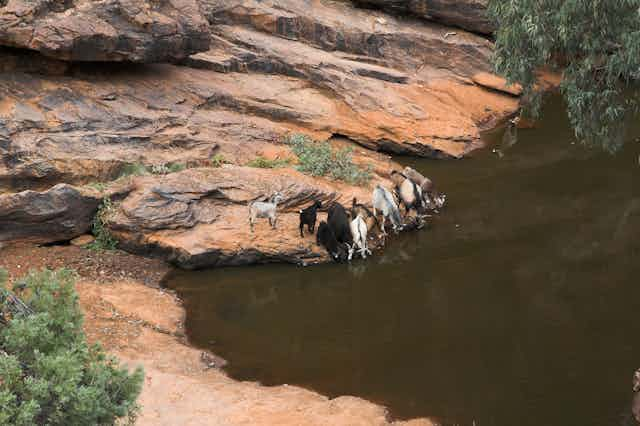The New South Wales Government will allow hunting to continue in national parks from October, after disbanding the state’s Game Council earlier this month following a scathing review of how it was being run.
But how can it return to the controversial practice of game hunting while satisfying the interests of everyone concerned?
What was wrong before?
The Game Council of New South Wales was established in 2002 to assist with the management of introduced species such as goats, foxes, rabbits, starlings and wild dogs.
From its inception, the Game Council was poorly governed. The recent Governance Review of the Game Council of NSW, also known as “the Dunn Report”, noted the Game Council was entrenched in the politics of the Shooters and Fishers Party. Hunting was administered by a statutory body heavily influenced by the Shooters and Fishers Party: a massive conflict of interest.
The Dunn report recommended that the Game Council be disbanded. The New South Wales government has agreed to implement this, transferring most functions of the Game Council to the New South Wales Department of Primary Industries.
The Game Council’s legacy
Disbanding the Game Council does not automatically lessen its sway.
Perhaps one of the most invidious legacies of the Game Council is its message that “conservation hunting” is a preferred tool for environmental management; the idea that recreational hunters are performing a community service and that hunting is the best way to deal with pest species.
Under the “Convention on Biological Diversity”, Australia has to eradicate and/or control harmful introduced species, including animals. This is often equated to hunting or culling.
However, it is one thing to consider killing animals in the context of an environmental obligation and quite another to consider it in the context of recreational activity. No doubt for these reasons the New South Wales government has announced that culling game animals in national parks will recommence, but under the close supervision of the New South Wales Parks and Wildlife Service.
And there are changes from the way recreational shooting was managed under the Game Council. Volunteer shooters will now have to undertake rigorous training, achieve a level of skill equivalent to that of park rangers, and hunt in nominated areas.
For the moment, unsupervised hunting by children as young as 12 and the use of knives and bows have been disallowed, much to the dismay of the Shooters and Fishers Party who have withdrawn their support for the New South Wales government.
Should we hunt for conservation at all?
National parks are the bastion of global conservation and must be protected from threats, including introduced species. Most management plans do this by reducing introduced species’ potential impacts on native biodiversity and by reducing the threat they pose to human life and livelihood. But in doing this we should also consider growing evidence of animals’ consciousness and sentience.
Despite the rhetoric from the former Game Council, rigorous scientific research shows that hunting won’t automatically help governments meet their conservation obligations.
In reality, reducing numbers of introduced animals is a complicated and increasingly fruitless exercise. For these reasons, regulators should approach killing in the name of conservation with caution. If killing is justifiable, ensure that it is done humanely.
Fixing governance won’t fix these problems. Shifting the operations of the former Game Council to the New South Wales Department of Primary Industries still means public funds are sponsoring recreational hunters to kill animals on public and private lands; yet, as just noted, this is not necessarily a sound environmental strategy.
Instead, government should consider systematic control programmes that focus on a range of complementary lethal and non-lethal strategies that do not ignore the welfare implications for wild animals.
The NSW Government is dealing with competing claims: sections of the public want to protect the environment and their livelihoods from harmful introduced species; others want to protect the introduced animals; others see introduced animals as a resource to be enjoyed by hunting them.
Government policy needs to take this spectrum of views into account rather than focusing on hunting.

